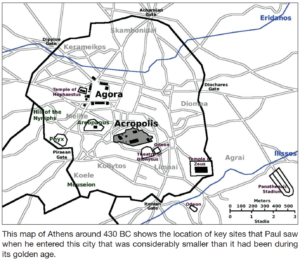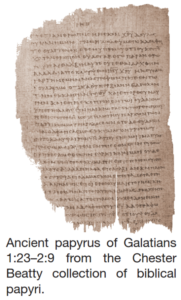
To this date, I think one of the most difficult academic tasks is to learn about Paul’s life and missions. This topic requires memorizing much information, such as the laws of the Roman empire, the geography of the cities Paul visited, the years in which Paul visited cities, the various historical reconstructions of Paul’s journeys, the methodologies for harmonizing Paul’s letters with Acts, and much, much more.
If you have never visited the regions of Paul’s journeys, and if you do not know much about the Roman empire, it’s incredibly difficult to learn all these things from a book with a bunch of text. How can you visualize the cities and the details given about them in Acts? How can you hold in your mind all the relative dates for each leg of his journeys? Scholars who study this subject somehow manage to do so, but all those who do not specialize in Pauline historical issues might also find this a grueling task.
In comes the Illustrated Life of Paul by Charles Quarles. It won’t solve all of your problems, but it will alleviate quite a few.
The Content
The book is laid out in nine chapters: a brief introduction, a chapter on Paul’s background, and seven more chapters chronologically ordered that teach through Paul’s journeys from Damascus to Rome. The endnotes (grrr) demonstrate that Quarles interacts with the most recent and quality scholarship while reconstructing Paul’s life.
The text itself reads easily and smoothly without getting bogged down in the academic debates on minor details (one example: at what age Paul moved to Tarsus).
The Illustrations
The illustrations in the book vary in kind. Some are famous paintings depicting ancient scenes. Some are modern pictures from Pauline geographical regions. Others are modern images portraying traditions that would have been the same in Paul’s day. Others are helpful maps. Best of all, the images are all in color!
But enough with the text, here are some samples of the images throughout the book.




What’s It Good For?
As you can see, the illustrations would be helpful to visualize all the historical, geographical, and cultural data one must digest to learn about Paul’s life and missions. It would therefore function well as a textbook for college and seminaries. Those who have studied this topic little would also benefit greatly.
There are other books that reconstruct Paul’s life and hash through the historical issues, such as F. F. Bruce’s classic Paul: Apostle of the Heart Set Free, and the more recent landmark study by R. Riesner, Paul’s Early Period. Quarles’ book, by contrast, presents more the conclusions of these debates rather than working through the dense details with excruciating labor. For that reason, Illustrated Life of Paul will serve well as an introduction to these issues, while the reader can afterward dive further into any specific issue of interest.
Preview or buy the Illustrated Life of Paul here.



